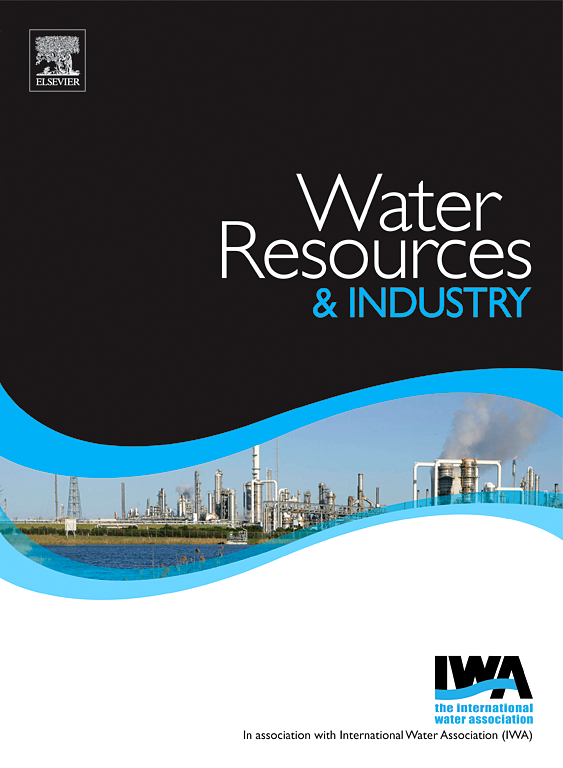Concentrating esterquat-based surfactant wastewater via forward osmosis: A step toward reuse
IF 7.5
3区 工程技术
Q1 WATER RESOURCES
引用次数: 0
Abstract
This study investigates the potential of forward osmosis (FO) for concentrating industrial wastewater obtained from the rinsing stage of esterquat-based cationic surfactant production. The raw wastewater exhibited a high chemical oxygen demand (COD) of approximately 20,000 mg O2/L and a significant concentration of cationic surfactants (CSs) from the esterquat group (∼2500 mg/L). The FO process with 1 M NaCl reduced wastewater volume by 50 %, resulting in a twofold increase in COD and CSs. An increase in the feed solution salinity (67–612 mg Cl−/L) confirmed the occurrence of reverse salt flux, while total organic carbon (TOC) in the draw solution at the end of the process reached ∼200 mg/L, indicating partial organic contaminants transfer through the membrane. These results demonstrate that FO is effective for concentrating wastewater and supports circular economy strategies by enabling water reuse and reducing freshwater consumption.
正渗透浓缩酯基表面活性剂废水:迈向再利用的一步
本研究探讨了正向渗透(FO)对酯基阳离子表面活性剂生产过程中漂洗阶段产生的工业废水的浓缩潜力。原水的化学需氧量(COD)约为20,000 mg O2/L,酯基阳离子表面活性剂(CSs)浓度显著(~ 2500 mg/L)。添加1 M NaCl的FO处理可使废水体积减少50%,COD和CSs增加2倍。进料液盐度的增加(67-612 mg Cl−/L)证实了反向盐通量的存在,而工艺结束时提取液中的总有机碳(TOC)达到~ 200 mg/L,表明部分有机污染物通过膜转移。这些结果表明,FO可以有效地集中废水,并通过实现水再利用和减少淡水消耗来支持循环经济战略。
本文章由计算机程序翻译,如有差异,请以英文原文为准。
求助全文
约1分钟内获得全文
求助全文
来源期刊

Water Resources and Industry
Social Sciences-Geography, Planning and Development
CiteScore
8.10
自引率
5.90%
发文量
23
审稿时长
75 days
期刊介绍:
Water Resources and Industry moves research to innovation by focusing on the role industry plays in the exploitation, management and treatment of water resources. Different industries use radically different water resources in their production processes, while they produce, treat and dispose a wide variety of wastewater qualities. Depending on the geographical location of the facilities, the impact on the local resources will vary, pre-empting the applicability of one single approach. The aims and scope of the journal include: -Industrial water footprint assessment - an evaluation of tools and methodologies -What constitutes good corporate governance and policy and how to evaluate water-related risk -What constitutes good stakeholder collaboration and engagement -New technologies enabling companies to better manage water resources -Integration of water and energy and of water treatment and production processes in industry
 求助内容:
求助内容: 应助结果提醒方式:
应助结果提醒方式:


